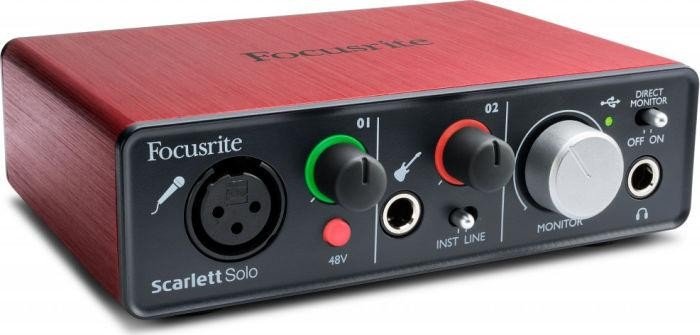

- #Komplete audio 6 vs focusrite upgrade#
- #Komplete audio 6 vs focusrite full#
- #Komplete audio 6 vs focusrite pro#
- #Komplete audio 6 vs focusrite professional#
Four balanced outputs can be used for monitoring and effects sends to make life easier.
#Komplete audio 6 vs focusrite full#
#Komplete audio 6 vs focusrite pro#
#Komplete audio 6 vs focusrite professional#
The best audio interfaces under $500 we mentioned today are a great example of professional audio interfaces. Those in the affordable entry-level model are great for smaller home studios, and while you work your way up, you’ll see devices that are suitable for professional use.

The best audio interfaces are how they tend to scale naturally. If you are serious about recording music and you need the most precise recordings and the best possible quality, then a first-class pre-amplifier is essential. They have taken the device directly from their most popular mixers and integrated them into the interface. Many brands will use their flagship preamplifiers, just like Roland, with their Octa-Capture technology. As you can imagine, units in this price range usually have a much better version of this hardware than the budget models. Of course, microphone pre-amplifiers and A/D converters are the core of every audio interface. When you drop up to $500 in your audio interface, you will find several other connectivity options, including Thunderbolt models. However, some of the most modern interfaces put the USB 2.0 standard to the limit. Many of these best audio interfaces under 500 dollars still use USB connections with great results.
:max_bytes(102400):strip_icc():strip_exif():fill(white)/blogs/p1110799-min.jpg)
Many budget models usually run on standard USB 2.0 (with average speeds of 480 Mbps), which is very acceptable. One of the best things to invest in your audio interface is the choice of connectivity. If you have a big studio and you’re running racks, buying a rack-friendly audio interface is perhaps The Best way to go. These interfaces fit neatly into a rack and can easily be screwed to the sides.Īs you probably know, when you shop in this price range, racks are one of the best ways to organize your audio equipment, and almost everything that is not an amplifier or mixer can now be put in a rack. Now, however, we are starting to see application-specific interfaces, in other words, rack-mounted designs.

At this price level, most models were designed to be used on a desktop, sit next to your laptop and take up relatively little space. If you look at the actual design or form factor of the interface, you will see differences in this range. Whether you need the digital, I/O cluster depends entirely on your needs, but the fact that they are there makes this category very attractive. It is worth noting that these are not all analog inputs.įor example, in an 18-input device, you will typically find eight standard XLR/TRS combined ports and ten digital inputs such as SPDIF ports and ADAT connectors. Forget the one, two, or four inputs of the budget categories, here you will usually find standard eight or more entries, with some units reaching up to about 18 entries.
#Komplete audio 6 vs focusrite upgrade#
Let’s start with probably the most obvious upgrade to enjoy The Best audio interfaces under $500 – better input and output options that can meet the demands of busier studios and more complex recording scenarios. To make this article easier to follow, we will subdivide these functions into different segments, including I/ O options, designs, connectivity, internal hardware, and software. In this section, there are numerous upgrades that you can not find in the entry categories. So you’ve found a few extra dollars to leap an audio interface of less than $200 to something in this range of less than $500? Excellent! You have doubled your options and can find an audio interface that will become a handy partner in your recording adventures. What To Expect From The Best Audio Interfaces Under $500


 0 kommentar(er)
0 kommentar(er)
